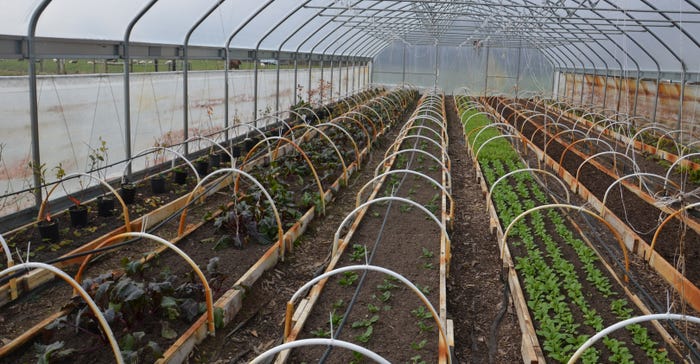
Chances are you’ve never met anyone quite like Sara Creech. Today she operates a successful, totally organic crop and livestock farm near North Salem, Ind., which is just west of Pittsboro. She’s also entering her first term as the first female supervisor of the Hendricks County Soil and Water Conservation District. Ten years ago she might have had trouble telling you exactly where North Salem, Ind., was, and she certainly didn’t have the first bit of experience growing food or raising livestock. How did she become so focused on producing organic food, improving her soil resources and protecting the environment, all at the same time?
“I was a nurse in the Air Force,” Creech begins. She was deployed overseas twice. Her husband, also in the Air Force, was a pilot. “I received an injury that forced me to leave the Air Force.”
Later, her husband was diagnosed with colon cancer. “We both became very interested in learning more about foods we were eating, and we read a lot about organic foods,” she says.
After her husband passed away, Creech was living in Florida and looking for a new challenge. Family in Indiana encouraged her to come here. She decided that if she did, she was bringing her love of growing things with her.
“I made an offer on a small farm, sight unseen,” she says with a laugh, recalling how the real estate agent was in disbelief. Eventually, the bank accepted her offer, and Blue Yonder Organic Farm was on its way.
Key contacts
Fast-forward from 2012, when Creech arrived in Indiana. She has relied on many resources to get her to this point. “My family has been very supportive and helps out when I really need it,” she says. “I also read a lot. I love to read, and if I can’t figure out how to do something, I can usually find a book that explains it.”
She also made a key contact with Jerod Chew, district conservationist for the Natural Resources Conservation Service in Hendricks County. He told her about various options through the Environmental Quality Incentives Program that could help her improve her farm for both animal and vegetable production.
“We entered into agreements, and I’m just finishing a rotational grazing system with water to each paddock,” she says. Sheep, chickens and a few cows are in the pastures.
“We also put up a hoop house so we could raise vegetables nearly year-round,” she adds.
More recently, Creech has worked with Elli Blaine and Kevin Allison, two people with unique roles in local SWCDs — Blaine with Hendricks County and Allison with Marion County. Allison also works with Hendricks County through a special grant. Both work with urban and small farmers to help them learn how to better conserve soil resources. Blaine’s funding is directly tied to a Clean Water Indiana grant received jointly by both districts. Blaine and Allison have introduced Creech to such things as cover crops for vegetable production.
Main enterprises
Here are some of Creech’s main enterprises that help her meet niche markets. All are certified organic.
• Poultry. Some 400 chickens roam pastures and nest inside the same buildings as larger livestock. “We sell organic eggs and broilers,” Creech says. She has one employee, who helps her cut up chickens for customers.
Creech sells at farmers markets, but she also participates in more than one co-op where families pay a subscription fee to get a box of seasonal produce every week. “We even have one for eggs, and we deliver eggs to a central location in downtown Indianapolis,” she says.
• Other livestock. Creech also sells meat from other animals. “The cows weren’t organic when we bought them,” she says. “But since we got them before their last trimester, their offspring were organic.”
• Vegetables. A wide variety of vegetables are produced on higher ground. Mulch sometimes consist of plastic to keep weeds out. She also uses netting to ward off insects from certain crops.
• Hoop house crops. The goal is to grow vegetables all year long in the high-tunnel hoop house, Creech says. While one crop is being harvested, she may be planting another one nearby. “We use raised beds because we must use organic soil,” she explains.
• Strawberries. Creech planted strawberries last fall, and mulched them with straw. “We’re trying to make the early spring market for berries,” she says. “Even the straw must be organic, and it’s hard to find. Most of it comes from northern Indiana.”
• Asparagus. This asparagus patch is more than a short row of plants for home use. It’s a good-size patch, and it’s also certified organic.
• Mushrooms. You read right! “We cut logs, drill holes in them and inoculate them, and then soak them in a big tub,” Creech explains. “Then we stand them up against objects at the edge of the woods, and mushrooms emerge from the holes.” They fetch $12 per pound or more at farmers markets, she says.
Click through the slideshow below to see some photos from Blue Yonder Organic Farm.
About the Author(s)
You May Also Like




